Freestream Turbulence Effects on the Aerodynamics of an Oscillating Square Cylinder at the Resonant Frequency
Abstract
1. Introduction
2. Numerical Methods
2.1. Governing Equations
2.2. Turbulent Inflow Generation
2.3. Boundary Conditions
3. Validation of the Implementation of Turbulent Inflow Generation Method
4. Numerical Setup
4.1. Domain Configuration and Resolution Verification
4.2. One-Degree-of-Freedom Oscillation of the Cylinder
4.3. Freestream Turbulence Parameters
5. Flow Past an Oscillating Square Cylinder
5.1. Fluctuating Lift and Its Power Spectrum Distribution
5.2. Spatial Correlation in the Shear Layer and the Wake
5.3. Turbulent Statistics and Recirculation in the Wake
6. Conclusions and Discussion
Author Contributions
Funding
Data Availability Statement
Acknowledgments
Conflicts of Interest
References
- Vickery, B. Fluctuating lift and drag on a long cylinder of square cross-section in a smooth and in a turbulent stream. J. Fluid Mech. 1966, 25, 481–494. [Google Scholar] [CrossRef]
- Mulhearn, P. Stagnation and reattachment lines on a cylinder of square cross-section in smooth and turbulent flows. Nat. Phys. Sci. 1973, 241, 165–167. [Google Scholar] [CrossRef]
- Lee, B. The effect of turbulence on the surface pressure field of a square prism. J. Fluid Mech. 1975, 69, 263–282. [Google Scholar] [CrossRef]
- Castro, I.; Robins, A. The flow around a surface-mounted cube in uniform and turbulent streams. J. Fluid Mech. 1977, 79, 307–335. [Google Scholar] [CrossRef]
- Miyazaki, M.; Miyata, T. Effect of turbulence scale on aerodynamic responses of rectangular cylinders. In Proceedings of the 5th Symposium Wind Eff. Struct, Tokyo, Japan, December 1978; pp. 191–198. [Google Scholar]
- Courchesne, J. Rectangular section cylinders subjected to low-turbulence and turbulent two-dimensional flows. In Proceedings of the Second Canadian Workshop on Wind Engineering: l’Institut de Recherche de l’Hydro-Quebec (IREQ), Varennes, QC, Canada, 28–29 September 1978. [Google Scholar]
- Bearman, P.; Morel, T. Effect of free stream turbulence on the flow around bluff bodies. Prog. Aerosp. Sci. 1983, 20, 97–123. [Google Scholar] [CrossRef]
- Laneville, A.; GV, P. An explanation of some effects of turbulence on bluff bodies. In Proceedings of the Fourth International Conference on Wind Effects on Buildings and Structures, London, UK, 8–12 December 1975; pp. 333–341. [Google Scholar]
- Nakamura, Y.; Ohya, Y. The effects of turbulence on the mean flow past two-dimensional rectangular cylinders. J. Fluid Mech. 1984, 149, 255–273. [Google Scholar] [CrossRef]
- Daniels, S.J.; Castro, I.P.; Xie, Z.T. Peak loading and surface pressure fluctuations of a tall model building. J. Wind. Eng. Ind. Aerodyn. 2013, 120, 19–28. [Google Scholar] [CrossRef]
- Yan, B.; Li, Q. Inflow turbulence generation methods with large eddy simulation for wind effects on tall buildings. Comput. Fluids 2015, 116, 158–175. [Google Scholar] [CrossRef]
- Ricci, M.; Patruno, L.; de Miranda, S.; Ubertini, F. Flow field around a 5:1 rectangular cylinder using LES: Influence of inflow turbulence conditions, spanwise domain size and their interaction. Comput. Fluids 2017, 149, 181–193. [Google Scholar] [CrossRef]
- Xia, J.; Li, K.; Ge, Y. Spanwise coherence of fluctuating forces on twin bridge decks and the turbulence effect. Adv. Struct. Eng. 2019, 22, 3207–3221. [Google Scholar] [CrossRef]
- Zhao, C.; Wang, H.; Zeng, L.; Alam, M.M.; Zhao, X. Effects of oncoming flow turbulence on the near wake and forces of a 3D square cylinder. J. Wind. Eng. Ind. Aerodyn. 2021, 214, 104674. [Google Scholar] [CrossRef]
- Bearman, P.; Obasaju, E. An experimental study of pressure fluctuations on fixed and oscillating square-section cylinders. J. Fluid Mech. 1982, 119, 297–321. [Google Scholar] [CrossRef]
- Taylor, I.; Vezza, M. Calculation of the flow field around a square section cylinder undergoing forced transverse oscillations using a discrete vortex method. J. Wind. Eng. Ind. Aerodyn. 1999, 82, 271–291. [Google Scholar] [CrossRef]
- Tamura, T.; Ono, Y. LES analysis on aeroelastic instability of prisms in turbulent flow. J. Wind. Eng. Ind. Aerodyn. 2003, 91, 1827–1846. [Google Scholar] [CrossRef]
- Daniels, S.J.; Castro, I.P.; Xie, Z.T. Numerical analysis of freestream turbulence effects on the vortex-induced vibrations of a rectangular cylinder. J. Wind. Eng. Ind. Aerodyn. 2016, 153, 13–25. [Google Scholar] [CrossRef]
- Daniels, S.J.; Xie, Z.T. An overview of Large-Eddy Simulation for wind loading on slender structures. Proc. Inst. Civ.-Eng.-Eng. Comput. Mech. 2022, 175, 1–67. [Google Scholar] [CrossRef]
- Wu, T.; Kareem, A. An overview of vortex-induced vibration (VIV) of bridge decks. Front. Struct. Civ. Eng. 2012, 6, 335–347. [Google Scholar] [CrossRef]
- Bartoli, G.; Righi, M. Flutter mechanism for rectangular prisms in smooth and turbulent flow. J. Wind. Eng. Ind. Aerodyn. 2006, 94, 275–291. [Google Scholar] [CrossRef]
- Lin, Y.Y.; Cheng, C.M.; Wu, J.C.; Lan, T.L.; Wu, K.T. Effects of deck shape and oncoming turbulence on bridge aerodynamics. Tamkang J. Sci. Eng. 2005, 8, 43–56. [Google Scholar]
- Chen, Y.; Djidjeli, K.; Xie, Z.T. Large eddy simulation of flow past stationary and oscillating square cylinders. J. Fluids Struct. 2020, 97, 103107. [Google Scholar] [CrossRef]
- Inagaki, M.; Kondoh, T.; Nagano, Y. A mixed-time-scale SGS model with fixed model-parameters for practical LES. J. Fluids Eng. 2005, 127, 1–13. [Google Scholar] [CrossRef]
- Leonard, B.P. A stable and accurate convective modelling procedure based on quadratic upstream interpolation. Comput. Methods Appl. Mech. Eng. 1979, 19, 59–98. [Google Scholar] [CrossRef]
- Yang, J.; Balaras, E. An embedded-boundary formulation for large-eddy simulation of turbulent flows interacting with moving boundaries. J. Comput. Phys. 2006, 215, 12–40. [Google Scholar] [CrossRef]
- Xie, Z.T.; Castro, I.P. Efficient generation of inflow conditions for large eddy simulation of street-scale flows. Flow Turbul. Combust. 2008, 81, 449–470. [Google Scholar] [CrossRef]
- Kim, Y.; Castro, I.P.; Xie, Z.T. Divergence-free turbulence inflow conditions for large-eddy simulations with incompressible flow solvers. Comput. Fluids 2013, 84, 56–68. [Google Scholar] [CrossRef]
- Wu, X. Inflow Turbulence Generation Methods. Annu. Rev. Fluid Mech. 2017, 49, 23–49. [Google Scholar] [CrossRef]
- Bercin, K.; Xie, Z.; Turnock, S. Exploration of digital-filter and forward-stepwise synthetic turbulence generators and an improvement for their skewness-kurtosis. Comput. Fluids 2018, 172, 443–466. [Google Scholar] [CrossRef]
- Klapwijk, M.; Lloyd, T.; Vaz, G.; Van Terwisga, T. Evaluation of scale-resolving simulations for a turbulent channel flows. Comput. Fluids 2020, 209, 1–20. [Google Scholar] [CrossRef]
- Lund, T.S.; Wu, X.; Squires, K.D. Generation of turbulent inflow data for spatially-developing boundary layer simulations. J. Comput. Phys. 1998, 140, 233–258. [Google Scholar] [CrossRef]
- Kim, Y.; Xie, Z.T. Modelling the effect of freestream turbulence on dynamic stall of wind turbine blades. Comput. Fluids 2016, 129, 53–66. [Google Scholar] [CrossRef]
- Chen, Y.; Djidjeli, K.; Xie, Z.T. Large eddy simulation of flow past a bluff body using immersed boundary method. In Proceedings of the 25th Anniversary of the European Community on Computational Methods in Applied Sciences (ECCOMAS), Glasgow, UK, 11–15 June 2018. [Google Scholar]
- Coletti, F.; Maurer, T.; Arts, T.; Di Sante, A. Flow field investigation in rotating rib-roughened channel by means of particle image velocimetry. Exp. Fluids 2012, 52, 1043–1061. [Google Scholar] [CrossRef]
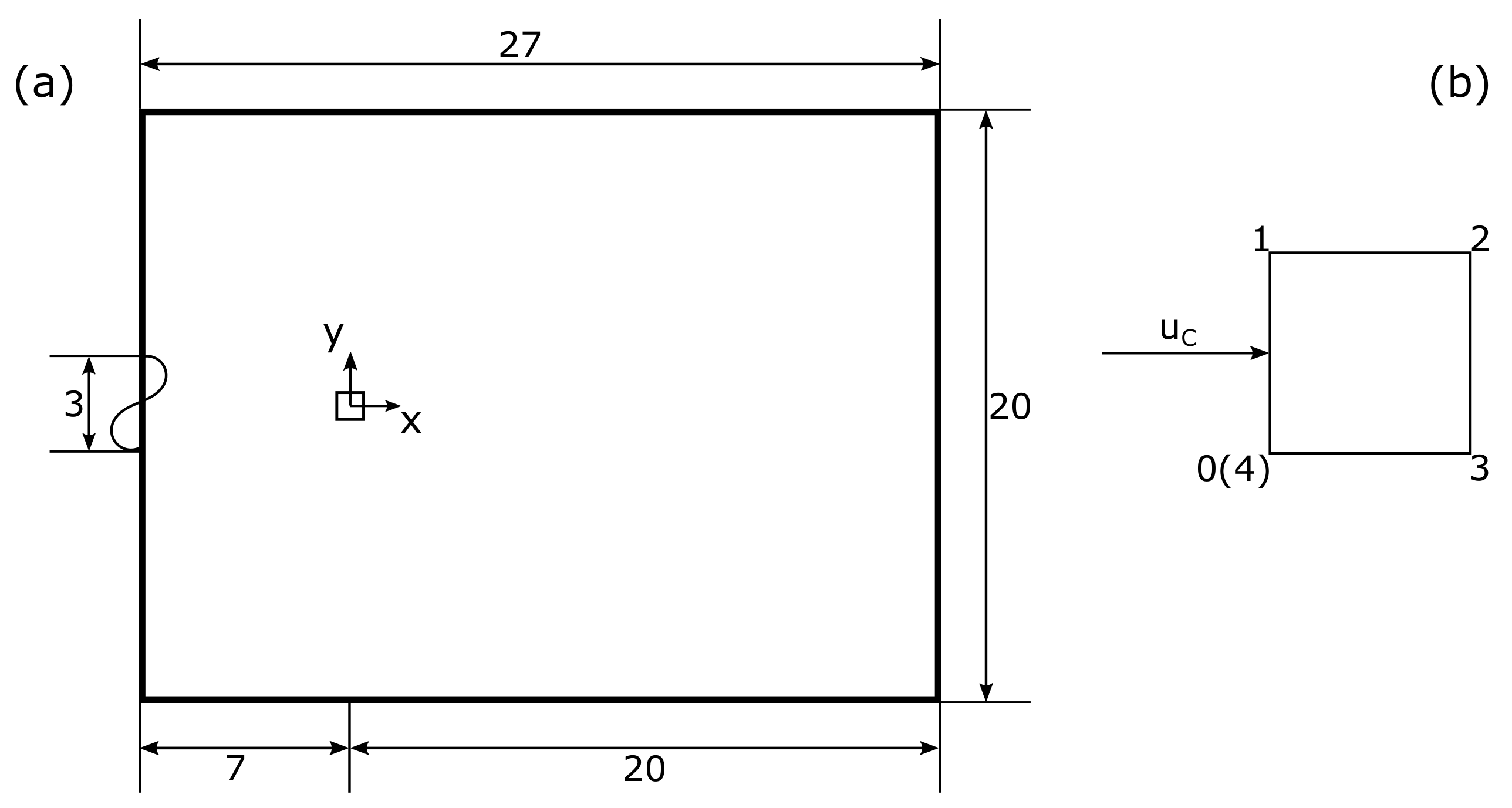

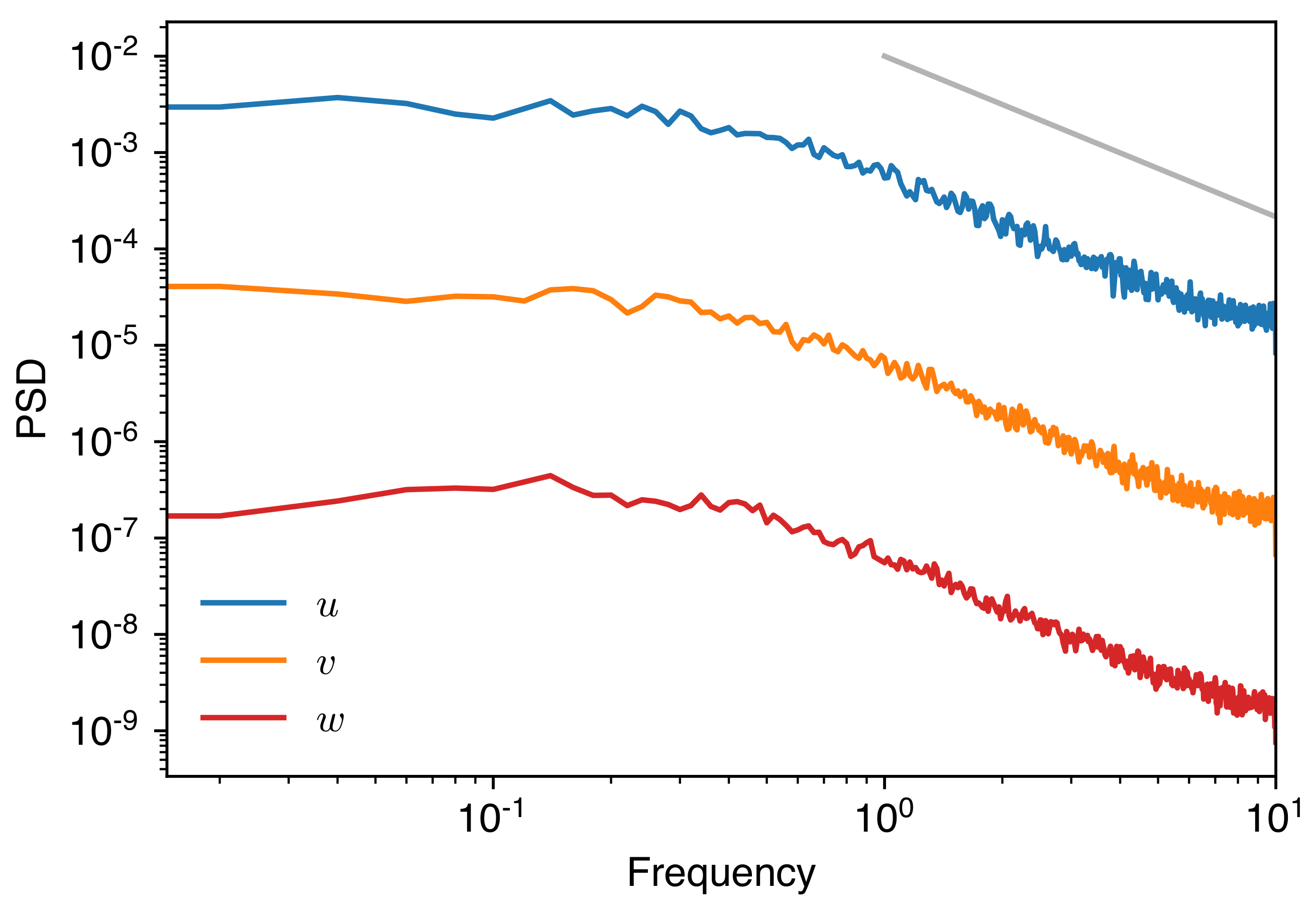
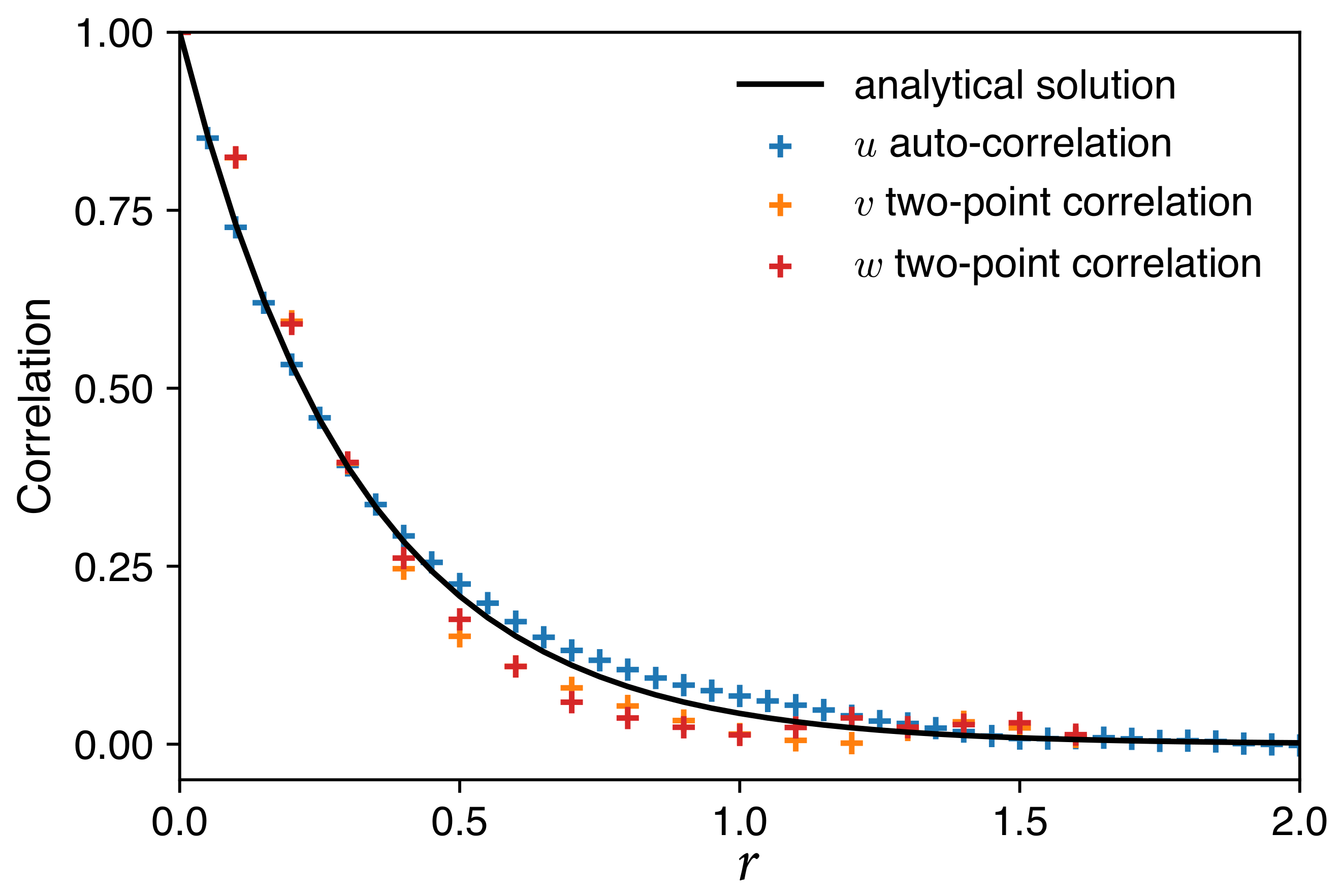
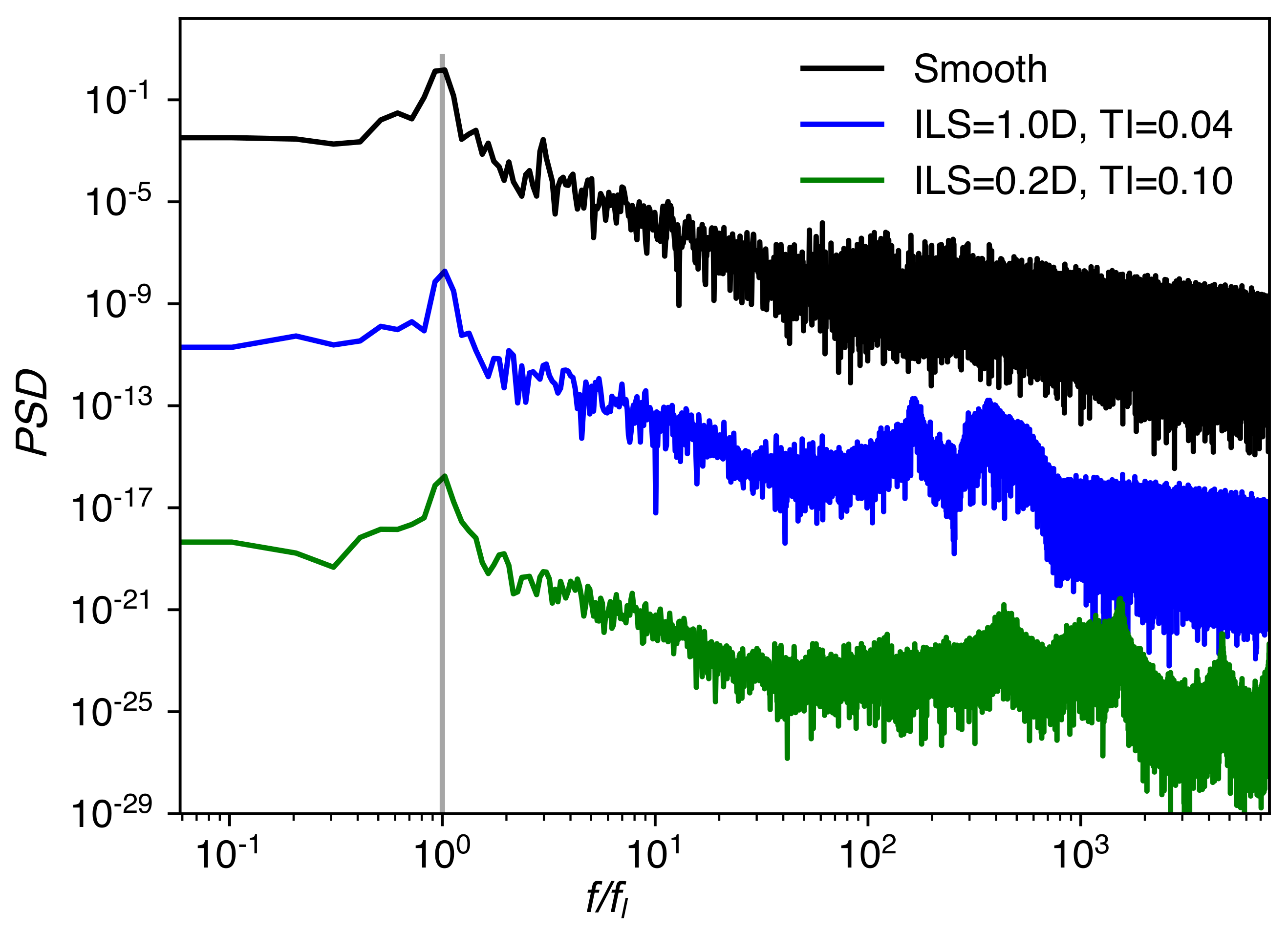


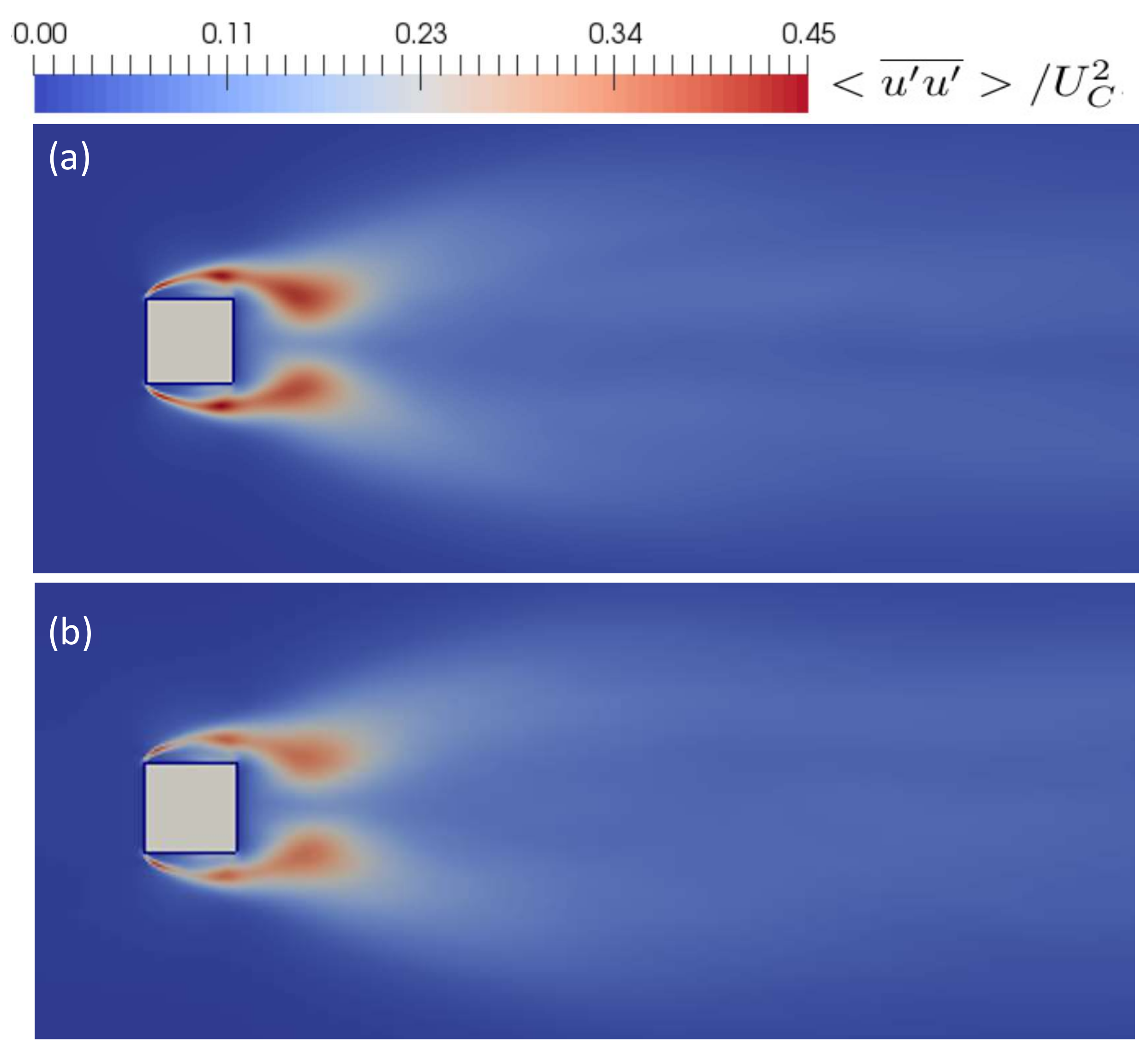
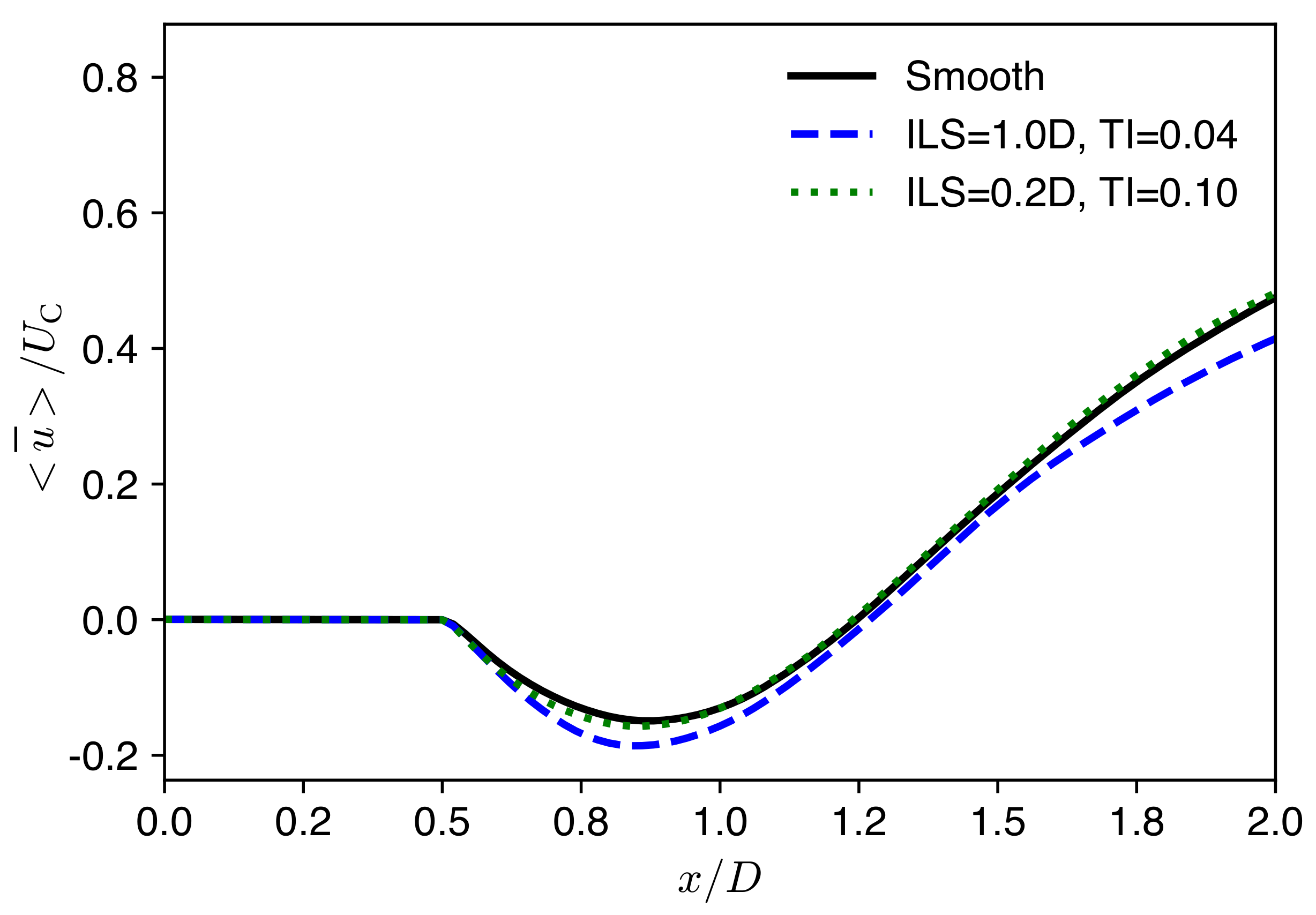
Publisher’s Note: MDPI stays neutral with regard to jurisdictional claims in published maps and institutional affiliations. |
© 2022 by the authors. Licensee MDPI, Basel, Switzerland. This article is an open access article distributed under the terms and conditions of the Creative Commons Attribution (CC BY) license (https://creativecommons.org/licenses/by/4.0/).
Share and Cite
Chen, Y.; Djidjeli, K.; Xie, Z.-T. Freestream Turbulence Effects on the Aerodynamics of an Oscillating Square Cylinder at the Resonant Frequency. Fluids 2022, 7, 329. https://doi.org/10.3390/fluids7100329
Chen Y, Djidjeli K, Xie Z-T. Freestream Turbulence Effects on the Aerodynamics of an Oscillating Square Cylinder at the Resonant Frequency. Fluids. 2022; 7(10):329. https://doi.org/10.3390/fluids7100329
Chicago/Turabian StyleChen, Yongxin, Kamal Djidjeli, and Zheng-Tong Xie. 2022. "Freestream Turbulence Effects on the Aerodynamics of an Oscillating Square Cylinder at the Resonant Frequency" Fluids 7, no. 10: 329. https://doi.org/10.3390/fluids7100329
APA StyleChen, Y., Djidjeli, K., & Xie, Z.-T. (2022). Freestream Turbulence Effects on the Aerodynamics of an Oscillating Square Cylinder at the Resonant Frequency. Fluids, 7(10), 329. https://doi.org/10.3390/fluids7100329







